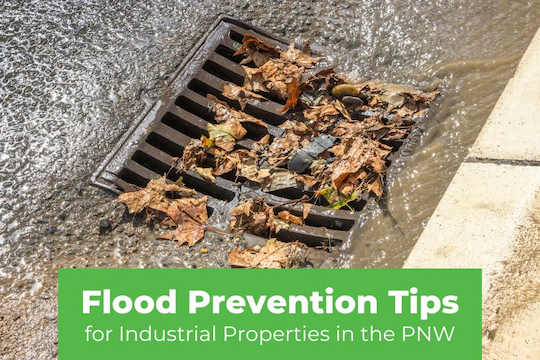What is your HOA's responsibility regarding stormwater runoff? Surprisingly (or unsurprisingly) maintaining stormwater systems falls on the property owner. Depending on where your HOA is located, you may have specific municipal requirements in addition to statewide regulations. Once you determine your responsibilities, it is time to translate them into stormwater system maintenance for HOAs. What does this look like?
Regular Inspections Ensure Compliance, Prevent Flooding, Support Clean Public Waterways
At the forefront of effective stormwater management are regular inspections of existing infrastructure. Many HOAs schedule routine inspections annually. They may also want to add another inspection after a major storm that could have adversely impacted any infrastructure element. A qualified stormwater specialist can inspect retention ponds, control structures, oil-water separators, bioswales, conveyance lines, and detention systems. They then document findings, which allows you to prioritize needed maintenance. Routine inspections are cost-effective because they alert you to improvements or repairs so the HOA can budget for them.

Clearing Debris and Removing Sediment from the Stormwater Management System
One of the most important HOA stormwater maintenance tips is to follow up on the findings of an inspection. Frequently, this means removing trash, leaves, sediment, and other debris from catch basins, grates, bioswales, and more. Retention ponds, in particular, tend to accumulate sediment, reducing their ability to hold water. Regular sediment removal is critical to prevent clogging and maintain flow capacity. In addition, trash can pose a major stormwater issue for HOAs. Between residents littering, landscapers improperly disposing of green waste or debris, and even incomplete trash collection or accidental spills, it is important to make sure that trash and other pollutants do not enter your stormwater system.
Maintain the Vegetation You Rely on as Part of Your Detention Ponds and Rain Gardens
The HOA may consider rain gardens an amenity. However, if you are in charge of managing stormwater, you know that rain gardens have many more practical applications. Mow and trim grass and vegetation around ponds, swales, and ditches to control erosion and maintain flow. Remember to avoid over-fertilizing, which can lead to nutrient runoff. Similarly, prevent the use of insecticides and assorted weed killers, and remove non-native invasive plants.

Remember To Practice Excellent Erosion Control
Signs of erosion begin small but increase quickly. Work with your landscaping contractor to recognize erosion and stabilize the soil using mulching, reseeding, or erosion control blankets. This is particularly important on and around slopes near stormwater features. Install riprap by inlets and outlets, and make sure to maintain any neglected areas.
Do Your Part to Ensure Inlet and Outlet Functionality
In addition to scheduling regular stormwater system maintenance for your HOA, the Association can appoint a representative to inspect the infrastructure visually. While it is true that you can only keep an eye on the visible elements of the stormwater management infrastructure, this does allow you to keep storm drain inlets and outlets clear and in good repair. You can also check for and remove blockages regularly, especially after storms. There is no reason to wait until a municipal inspection to remove the trash and debris that clog the grates.
Best Management Practices (BMPS) for the Managing Association Representative
While some of the tips for stormwater system maintenance for HOAs involve hands-on tasks, you are also responsible for a significant amount of work on the backend.
- Keep accurate, detailed records. You must maintain detailed records of all inspections, maintenance appointments, and actual repairs. They must be filed along with up-to-date maps of the stormwater system, schedules, and any reports. Doing so ensures continuity and regulatory compliance. Remember that today's association representative may not be available next year to handle the next inspection. Therefore, an incoming employee must be able to pick up where the other one left off.
- Educate residents. When resident behavior negatively impacts water quality and drainage systems, take the time to inform HOA members about what not to dump into storm drains, the importance of proper landscaping, and best practices for pet waste and lawn care. You might use monthly meetings for these discussions and follow these up with signage and newsletters to reinforce responsible behavior.
- Develop a stormwater maintenance plan. You may work with one of the HOAs with an excellent, updated plan. However, if you are not, it is up to you to create a comprehensive plan that outlines all HOA's stormwater system components, including inspection schedules, maintenance tasks, emergency contacts, and budgeting. Reviewing and updating the plan annually may be necessary, especially when significant budgetary concerns arise.

Collaborate With the Qualified Professionals of CatchAll Environmental for All Your Regular and Long-Term Stormwater Needs
If it involves stormwater, our team does it. We do more than perform periodic assessments and handle repairs that exceed routine maintenance. Our team utilizes a Smart-Clean process designed to save you money, and record keeping is easy through our convenient client portal.
So, let's start with our Seattle storm drain cleaning service and take it from there. Call us today to schedule an appointment!












